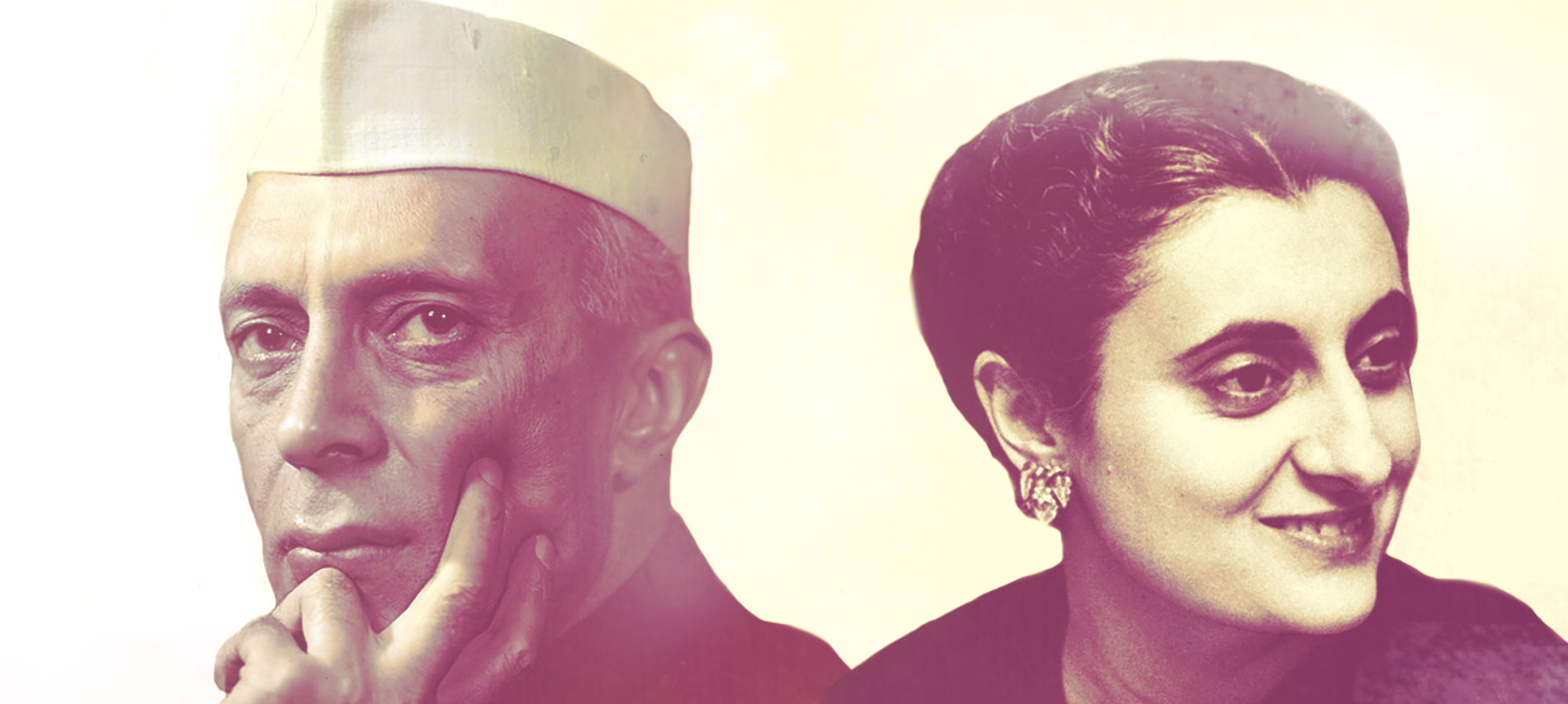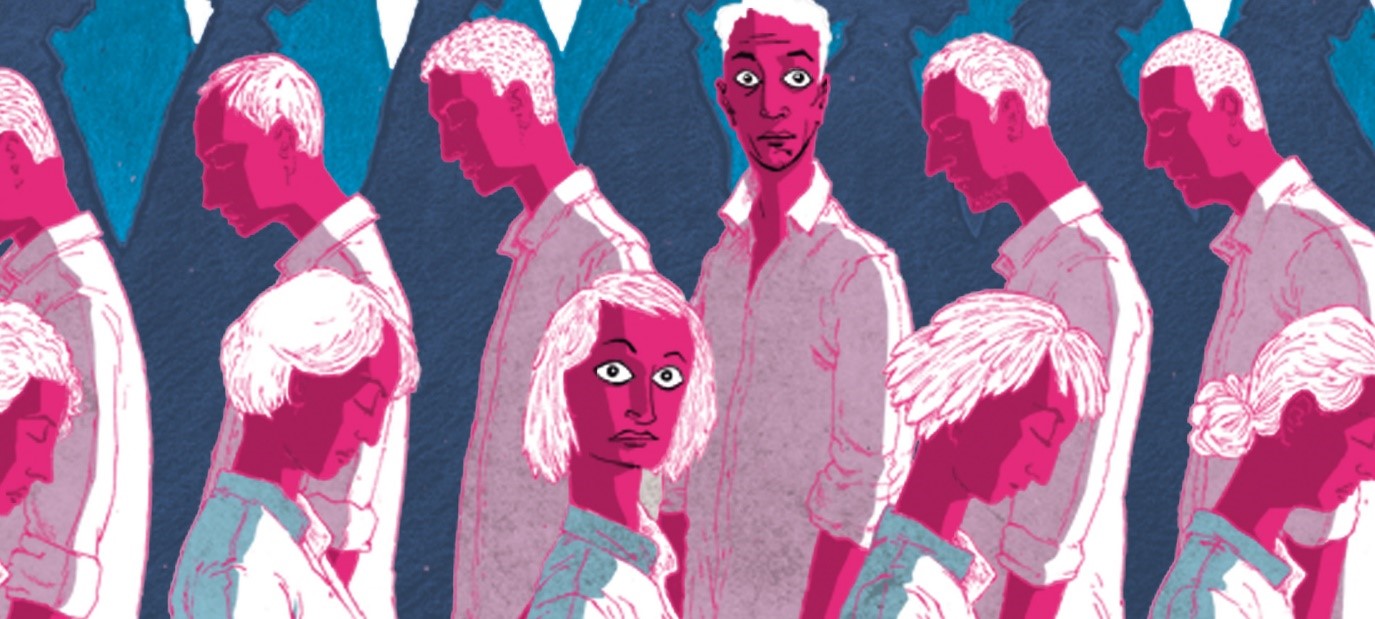Indira Gandhi is not only remembered as the only woman prime minister of the country but also as a political leader with nerves of steel. She broke the conventional, democratic ruling method that her family had been using and adopted a somewhat authoritarian way of ruling the nation.
Nayantara Sahgal in her book Indira Gandhi: Tryst with Power answers the questions everyone ponders upon about her rule.
Being Mrs Gandhi’s cousin, Sahgal articulately talks about her individualized style of functioning in politics and the changes the country went through during her rule.
Here are five quotes that show why Mrs Gandhi was called the Iron Lady of India:





Read more about Indira Gandhi’s political regime in Nayantara Sahgal’s Indira Gandhi: Tryst with Power.

Tag: birthday
A Glimpse Into the Emotional Side of Indira Gandhi, An Excerpt from ‘Indira Gandhi: A Biography’
Indira Gandhi was the first female Prime Minister of India. While most of her life was dominated by politics, only a few knew Indira’s non-political persona.
Pupul Jayakar’s ‘Indira Gandhi: A biography’ seeks to uncover the many personalities that lay within Mrs Gandhi. The book also reveals the complex personality of Indira Gandhi—her thoughts and feelings, her hates and prejudices, her insights and her faults, her loves and emotional entanglements.
Here’s an excerpt which gives a glimpse into the emotional side of the late prime minister.
Motilal Nehru died in Lucknow in the early hours of 6 February 1930. His son Jawaharlal Nehru, released from jail a week earlier, in view of his father’s deteriorating condition, had, in desperation, moved his father from Allahabad to Lucknow where the medical facilities were
better. Motilal had been like an elder brother to Gandhiji and it was as part of the family that Gandhiji, released from detention by the British Government, hastened to see Motilal and accompanied him to Lucknow. He found Motilal’s face swollen beyond recognition, his body racked by asthma and his kidneys failing. The old patriarch died cradled in the love of his family and friends. He remained a nonbeliever to the end of his life; scorning priests and the recitation of mantras, he had joked with Gandhiji, challenging him to a race to heaven. He said if they were to die at the same time, the Mahatma would probably walk alone across the river of death, while he, Motilal, would speed across it in a motor-boat and shoot past the gates of heaven. Whether he would be allowed into heaven or not was a totally different matter. In a more serious mood he told Gandhiji, ‘I am going soon and I shall not be here to see Swaraj, but I know you have won it and will soon have it.’
On the night of Motilal’s death Jawaharlal was with him till midnight. Jawaharlal later told Gandhiji:
A very strange thing happened to me. Papa told me last
night that he had been taught the Gayatri Mantra in his
childhood, but he never cared to repeat it and thought he
had forgotten it completely long ago, but that night as he
lay in bed it all came back to him and he found himself
repeating it.
Motilal’s body, wrapped in the Congress flag, was brought from Lucknow to Anand Bhawan. He was cremated at the Sangam in Allahabad, at the point where the three rivers met. His ashes were cast into the rivers, to journey to the oceans. Vast mourning crowds accompanied the cortège. Gandhiji was present, so were Swaroop Rani, Vijayalakshmi, Krishna, Kamala and Indira.
Jawaharlal cried out in grief at the loss of his father, a mountain had crumbled; he was now head of the family, responsible for his mother and sisters. He resolved to make them feel that nothing had changed in the old home. The bond between father and son had matured beyond love into mutual respect and pride; a relationship that united them in a commonality of work though, perhaps, not of mind. Jawaharlal was in those early years an austere man of few needs,
Motilal, a man whose laughter filled the vast house, who could gather his extended family and friends in his embrace, savour abundance and give with a generosity of heart. He had a razor-sharp intellect and a joie de vivre seldom seen amongst Indians in the third decade of the twentieth century.
Indira had loved her grandfather with the intensity of a child. He had protected her, come to her aid when her parents rebuked her, listened to her tiny problems and laughed them away. He was the anchor in her insecure, chaotic world; the foundation stone that was always there; a presence so total that there was no space left to be alone or insecure. Alone, almost forgotten in Anand Bhawan, Indira wept, hidden behind a pillar. It was her first introduction to sorrow; her body was racked by an emotion with which she was not familiar.
Referring to her grandfather Motilal five decades later, Indira said, ‘With his death Anand Bhawan was silent. His resounding voice no longer echoed in the rooms or along the verandahs.’ She described his warmth and his fierce short-lived anger. Smiling at her memories, she said:
He always seemed to fill a room, although I now realize
he wasn’t really that tall, but at that time I thought he was
very tall and broad . . . and when he laughed the whole
house sort of shook and laughed with him. He was a
biform human being, both man and woman, with strength,
intellect and an abundance of feeling.
With a twinkle in her eye she went on to say that she felt that she was like him. Jawaharlal felt depleted. After his father’s death, he felt the need to renew himself, to lay down the complex political problems that surrounded him, to relax, to look at trees, meet people, to have a holiday. So he sailed with Kamala and Indira on the S.S. Cracovia to Ceylon (now Sri Lanka).

5 Reasons Why Margaret Atwood’s ‘The Handmaid’s Tale’ Resonates the Current Times
Margaret Atwood is one of the renowned names in the literary world. Some of her works include The Handmaid’s Tale (winner of both the Arthur C. Clarke Award for Science Fiction and the Governor-General’s Award, shortlisted for the Booker Prize and made in a major film) and The Robber Bride and Alias Grace.
Margaret Atwood wrote The Handmaid’s Tale while living in in West Berlin in 1984. The themes of the book reflected the sentiments associated with standing of the Berlin Wall. Although it has been more than three decades, the themes are still relevant.
Here are five quotes that depict how The Handmaid’s Tale is a powerful evocation of the present time:





Get your copy of Margaret Atwood’s poignant novel here.
Letters from a Father to his Daughter – An Excerpt
Jawaharlal Nehru, the first prime minister of independent India, was one of the prominent figures during the Indian freedom struggle. He started writing letters to his daughter Indira when she was ten years old. He wrote to her about diverse topics, ranging from the origin of the Earth to history of races and faith.
In a collection of 30 letters, Pandit Nehru imparted wisdom to his growing up daughter, while steering the movement to Indian freedom.
Here’s an excerpt from the book.
We saw in our last letter that the chief difference between man and the other animals was the intelligence of man. This intelligence made him cleverer and stronger than enormous animals who would otherwise have destroyed him. As man’s intelligence grew, so also grew his power.
To begin with, man had no special weapons to fight his enemies. He could only throw stones at them. Then he began to make out of stone: axes, spears and many other things, including fine stone needles. We saw many of these stone weapons in the South Kensington Museum and also in the museum in Geneva.
The Ice Age, about which I said something in my last letter, slowly ended and the glaciers disappeared from Central Europe and Asia. As it became warmer, men spread out.
In those days there were no houses or other buildings. People lived in caves. There was no cultivation, that is working in the fields. Men ate fruits and nuts and the animals they killed. They had no bread or rice because they did not grow anything in the fields. They did not know cooking but perhaps they just heated the meat on the big fires they had. They had no cooking vessels or pots and pans.
One thing is very curious. These savage men knew how to draw. Of course they had no paper or pens or pencils or brushes. They simply had their stone needles and pointed instruments. With these they scratched or drew animals on the walls of caves. Some of their drawings are quite good but they are almost all profiles. You know that it is easier to draw profiles, and children usually draw in this way. As the caves must have been dark it is probable that they used some kind of simple lamp.
These men that we have described are called Palaeolithic men, or the men of the old Stone Age. That period is called the Stone Age because men made all their tools with stone. They did not know how to use the metals. Today most of your things are made of metals, specially iron. But iron or bronze was not known then, and so stone, which is much more difficult to work with, was used.
Before the Stone Age came to an end, the climate of the world changed greatly and became much warmer. The glaciers had gone far back to the Arctic Ocean, and in Central Asia and Europe great forests arose. Among these forests we find a new race of men living. These people were cleverer in many ways than the Palaeolithic men whom we have just described. But they still made their tools out of stone. These men also belonged to the Stone Age but it was the later Stone Age. They are called Neolithic men or men of the new Stone Age.
We find when examining these Neolithic men that great progress has been made. The intelligence of man is making him go ahead fast compared to the other animals. These Neolithic men made the very great discovery of cultivation. They started tilling fields and growing their food there. This was a great thing for them. They could now get their food more easily instead of having to hunt animals all the time. They got more leisure, more time to rest and think. And the more leisure they had, the more progress they made in discovering new things and methods. They started making earthen pots, and with the help of these they began to cook their food. The stone tools were much better and were beautifully polished. They also knew how to tame animals like the cow, the dog, the sheep and the goat. They also knew how to weave.
They used to live in houses or huts. These huts were very often made in the middle of lakes as the wild animals or other men could not attack them easily there. These people are therefore called lake-dwellers.
You will wonder how we know so much about these people. They wrote no books of course. But I have already told you that the book where we read the story of these men is the great book of nature. It is not easy to read it. It requires great patience. Many people have spent their lives in trying to read this book and they have collected large numbers of fossils and other remains of old times. These fossils are collected together in the great museums, and we can see there the fine polished axes and the pots and stone arrows and needles and many other things which were made by the Neolithic man. You have seen many of these things yourself but perhaps you have forgotten them. If you see them again you will be able to understand them better.
There was, I remember, a very good model of a lake-dwelling in the Geneva museum. Wooden poles were stuck in the lake, and on top of these poles a wooden platform was made. On the platform the wooden huts were put up and the thing was connected by a little bridge to the land.
These Neolithic men clothed themselves with the skins of animals or sometimes with a rough cloth of flax. Flax is a plant which has a good fibre used for making cloth. Linen is now made out of flax. But in those days cloth of flax must have been very rough.
These men went on making progress. They started making tools of copper and of bronze. Bronze, as you know, is a mixture of copper and tin and is harder than either of these. They also used gold and were vain enough to make ornaments out of it!
These people must have lived about 10,000 years ago. Of course, we do not know the exact dates or periods. All this is largely guesswork. You will notice that so far we have been talking of millions of years. We are now gradually getting nearer and nearer to our present age. From the Neolithic man to the man today there is no break or sudden change. But still we are very different from him. The changes came slowly, as is nature’s way. Different races developed and each race went its own way and lived its own life. The climate being different in different parts of the world, people had to adapt themselves to it and changed greatly. But we shall talk about this later.
One thing more I want to tell you today. About the end of the Neolithic age a very great disaster happened to man. I have told you already that at that time the Mediterranean was not a sea at all. There were just some lakes there and in these lakes many people lived. Suddenly, the land near Gibraltar, between Europe and Africa, was washed away and the waters of the Atlantic Ocean poured into the low valley of the Mediterranean. The water went on pouring and filling it up, and large numbers of the men and women living near or over the lakes must have been drowned. They could not escape anywhere. There was water all over the place for hundreds of miles. The Atlantic Ocean continued to pour in till it had filled up the valley, and the Mediterranean Sea came into existence.
You have heard, of course, and perhaps read, about the great flood. The Bible speaks about it and some of our Sanskrit books also refer to it. It may be that this mighty flood was the filling up of the Mediterranean. It was such a terrible disaster that the few people who managed to escape must have told all about it to their children, and they to their own children, and so the story was handed down from generation to generation.

5 anecdotes from Kalam’s autobiography ‘The Life Tree’
Dr.APJ Abdul Kalam’s vivacity and creative energy traverses its way through in his autobiography, The Life Tree. The poems in the autobiography capture the essence of nature, human relationships and love for the country.
On the occasion of his birthday, here are a few moments from his life, immortalized in poems.
The picturesque view that Dr.Kalam and his friend, Vidyasagar witnessed is expressed in the lines below.

APJ Abdul Kalam, in the poem below, reflects on his childhood and the meaning of communalism

Dr Kalam was overjoyed receiving the Padma Vibushan in 1990. The lines below capture the emotion he felt upon receiving it.

The late President was distressed on hearing about Mother Teresa’s illness. The poem below captures his anguish.

Dr Kalam’s father said – “Never receive a gift; a gift is always accompanied by some purpose”. At 70, he recollects a lesson from the past.

Aren’t these lines magnificent just like him?

The Fascinating Life of Ernest Hemingway: War-Veteran, Journalist, Wordsmith
Nobel laureate, Ernest Hemingway, was born on July 21, 1899 in Illinois, USA. With his works influencing generations of writers after him, Hemingway’s journalistic, pragmatic and prosaic approach became famous for conveying some of the most difficult subjects.
The evolution of Hemingway’s writing style has everything to do with the course his life had taken. For Whom the Bell Tolls and A Farewell to Arms talk about life during the times of war, a reality Hemingway had lived through for a major part of his life. But before Hemingway settled for a life as a writer, his tryst with other professions is what shaped him as the wordsmith that he is.
Here’s looking at Ernest Hemingway’s life through his different professions.
Life as an ambulance driver for the Red Cross: After graduating from high school, Hemingway turned eighteen and tried to enroll in the army as World Was I was raging in Europe. The United States had joined the fight against Germany and Austria in 1917. However, Hemingway did not make it to the army due to poor vision in one eye, something that had been passed down to him by his mother. But soon enough when he heard that the Red Cross was taking volunteers as ambulance drivers, he did not think twice before signing up. Soon after joining as an ambulance driver in Italy he was severely injured due to a mortar shell exploding a few feet away from him. Hemingway was consequently awarded the Italian Silver Medal for Valor for his services in war. A Farewell to Arms was inspired by this phase of Hemingway’s life.

Life as a journalist: Between graduating from high school and joining the Red Cross in Italy, Ernest Hemingway had his first tryst as a cub reporter for the Kansas City Star for six months. Later, after returning from war in January 1919, he had a difficult time coping with the tranquillity of life back home – a far cry from the adventurous days in the battlefield. Despite not having turned 20 yet, the war had made Hemingway mature by years in a matter of just a few months. He began to work as a staff writer and foreign correspondent for the Toronto Star Weekly later that year. In 1920, Hemingway moved to Chicago and continued to write for the weekly from there.
After his marriage, Hemingway moved to Paris in September 1921 on being hired as a foreign correspondent for the Toronto Star. In his first 20 months in Paris, he filed 88 stories for the newspaper. His years as a journalist overlapped with his years as a writer, as is often the case with many others.

Birth of the writer: Ernest Hemingway needs no introduction as a writer. He has won some of the most prestigious awards in the world of literature. Not only has he written works of fiction, like The Sun Also Rises, A Farewell to Arms, The Old Man and the Sea and For Whom the Bell Tolls, his works of non-fiction too, like Death in the Afternoon and Green Hills of Africa, have been widely read across the world through generations. Writers after his time have tried relentlessly to emulate his style that is crisp, sharp and prosaic, displaying a major hangover from his journalist days. Hemingway had become a spokesperson of World War I for his generation, thereby establishing his style distinctively from the other writers of his times.

Ernest Hemingway’s legacy lives on not only through his literature, but also through the millions of tributes made to him. From pens to planets, clothes to highway inns, Hemingway and his words have continued to live on, inspire, fascinate.
‘Toward an Impure Poetry’ by Pablo Neruda
Pablo Neruda was a Chilean Nobel Laureate, famous for his surrealist and passionate love poems, along with historical epics and political manifestos. He was regarded as the “the greatest poet of the 20th century in any language” by another South American Nobel Laureate Gabriel Garcia Marquez.
There have been two schools of thought regarding what poetry should stand for and who it should be written for. While one school says poetry should be for the elites, or it should be “pure”, the other school, that Pablo Neruda believed in, felt poetry should be “impure” or depicting the blunt realities of life. This belief of his can be observed throughout his body of work, using metaphors and imageries that are drawn from every day things.
Here is the essay he wrote on why poetry should be impure.
It is good, at certain hours of the day and night, to look closely at the world of objects at rest. Wheels that have crossed long, dusty distances with their mineral and vegetable burdens, sacks from the coal bins, barrels, and baskets, handles and hafts for the carpenter’s tool chest. From them flow the contacts of man with the earth, like a text for all troubled lyricists. The used surfaces of things, the wear that the hands give to things, the air, tragic at times, pathetic at others, of such things—all lend a curious attractiveness to the reality of the world that should not be underprized.
In them one sees the confused impurity of the human condition, the massing of things, the use and disuse of substance, footprints and fingerprints, the abiding presence of the human engulfing all artifacts, inside and out.
Let that be the poetry we search for: worn with the hand’s obligations, as by acids, steeped in sweat and in smoke, smelling of the lilies and urine, spattered diversely by the trades that we live by, inside the law or beyond it.
A poetry impure as the clothing we wear, or our bodies, soup-stained, soiled with our shameful behavior, our wrinkles and vigils and dreams, observations and prophecies, declarations of loathing and love, idylls and beasts, the shocks of encounter, political loyalties, denials and doubts, affirmations and taxes.
The holy canons of madrigal, the mandates of touch, smell, taste, sight, hearing, the passion for justice, sexual desire, the sea sounding—willfully rejecting and accepting nothing: the deep penetraion of things in the transports of love, a consummate poetry soiled by the pigeon’s claw, ice-marked and tooh-marked, bitten delicately with our sweatdrops and usage, perhaps. Till the instrument so restlessly played yields us the comfort of its surfaces, and the woods show the knottiest suavities shaped by the pride of the tool. Blossom and water and wheat kernel share one precious consistency: the sumptuous appeal of the tactile.
Let no one forget them. Melancholy, old mawkishness impure and unflawed, fruits of a fabulous species lost to the memory, cast away in a frenzy’s abandonment—moonlight, the swan in the gathering darkness, all hackneyed endearments: surely that is the poet’s concern, essential and absolute.
Those who shun the “bad taste” of things will fall flat on the ice.
6 Themes of George Orwell’s ‘1984’ that We Need to be Mindful of
George Orwell’s dystopian masterpiece, Nineteen Eighty-Four, is perhaps the most pervasively influential book of the twentieth century, and here are a few important themes of the book that we need to be mindful of.
Totalitarianism: Total Control, Pure Power
The Party – the controller of the superstate – “seeks power entirely for its own sake.” As an official admits: “We are not interested in the good of others; we are interested solely in power, pure power.”

Propaganda Machines
A well-organized and effective propaganda machine goes a long way in ensuring total control of the Party over the superstate and its residents. The regulation and dissemination of information involves “tearing human minds to pieces and putting them together again in new shapes of your choosing.”

The Thing Called Love
The totalitarian knows that to rule people he needs to quell all ways of achieving happiness and fulfilment. Therefore, love and sex, two of the most enriching human experiences, are killed and depersonalized.

Liberty and Censorship
The Ministry of Truth works tirelessly and meticulously to modify public archives and rewrite history. As a result, “the past was erased, the erasure was forgotten, the lie became the truth.”

Language: Doublethink and Newspeak
The residents of the superstate are forced to communicate in Newspeak – the government’s invented language. It plays a pertinent role in the Party’s control over the masses.

Technology: All-seeing Telescreens and a Watchful Eye
The Party needs and develops top-notch technology to exercise ruthless control over the residents. Without telescreens, the Thought Police would fail in its objective of surveillance. And, of course, overseeing all of this is Big Brother.

Gripped by the themes above? Are you going to read or reread Nineteen Eighty-Four? Do tell us about other ominous themes of the book that all of us should be mindful of!
5 Must Read George Orwell Books
George Orwell, a man of strong opinions, is known for commenting on some of the major political movements of his time. Addressing issues like imperialism, fascism, and communism, Orwell’s books are popular for raising important issues like no one else.
Here are five must read books by the brilliant author:
Animal Farm

One of Orwell’s most popular books, Animal Farm combines Animal fable with political satire targeting Stalinist Russia. Although going beyond only one particular time, Animal Farm makes a statement about human society everywhere. Chosen by Time magazine as one of the 100 best English- language novels (1923 to 2005), the allegorical novel exemplifies the democratic socialism that Orwell’s novels are set to advocate.
Burmese Days

Burmese Days was published in the UK in 1934. A tale of the old days when Burma was ruled from Delhi as a part of British India, Burmese Days describes the corruption and bigotry of imperialism. Set in 1920s in the fictional district of Kyauktada, the book is often known for its harsh portrayal of the time. In a letter from 1946, Orwell said “I dare say it’s unfair in some ways and inaccurate in some details, but much of it is simply reporting what I have seen”
Coming Up for Air

One day a salesman wins some extra money and goes back to his village. Coming Up For Air is a different coming of age novel where the protagonist has to come to terms with the changes that have taken place in his village, has to let go of his childhood memories and accept the new times.
Homage to Catalonia

Published in 1938, Homage to Catalonia is a must read because it is George Orwell’s personal account of his experiences in the Spanish Civil War. It is a gripping read describing up close and personal the horrors of war, the lack of food, poor guns and what it is like to be wounded. The book brings alive the complications of the Spanish Civil war and proves to be a vivid and engrossing read.
Down and Out in Paris and London

Orwell’s vivid descriptions on the theme of poverty include an account of life in near destitution in Paris, experience of casual labour, a tramp’s life in and around London. The brilliance of tragic-comic expressions is what makes the book a unique and interesting experience.
Pick any book and you’re in for a wonderful read!
6 Times Erich Segal Made Us Fall In Love With His Words
Professor, author, screenwriter, Erich Segal’s words were known for winning hearts. While he taught us about the beauty and magic of true love, he also articulated the pain of heartbreak and loss like no one else could. His books are time travelling machines, taking you on journeys into strangers’ lives, helping you figuring out your own.
On his birthday, here are six times he taught us about love, life and everything in between:
When he reminded us that true love cannot be lost.

When he defined the complications of life so easily.

The time we learnt that no one is perfect.

When he taught us the simple trick of true love.

When he perfectly captured the world around us in one simple sentence.

When he dared to show us the sad reality.

His words never fail to make us feel alive and fall in love, over and over again. If you haven’t yet read any of his books, just pick your favourite quote and start with that book! So, which magical world are you going to travel to today?
















